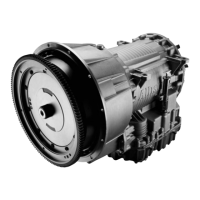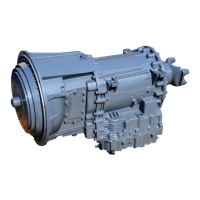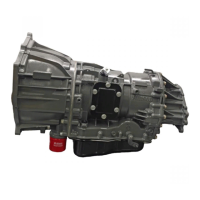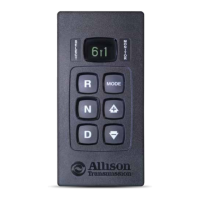b. For the 3000 Product Family connect: engine and output speed sensors,
and the retarder control connector (if retarder is present and unit was built
before January, 1998)
c. For 3000 Product Family units with retarder built beginning January,
1998 connect: the retarder temperature thermistor, the output speed sensor,
and the retarder valve body connector. Also the tachograph cable, if used,
to the port on the rear of the retarder housing.
3. If used, connect the PTO(s) connector(s). The PTO connector is not part of
the Allison Transmission external wiring harness.
4. Be sure the speed sensors, the PTO connector, and other connections are
securely seated and latched by pulling on the connector—NOT THE
WIRES. On the 3000 Product Family, turn the retarder connector (if used)
until feeling a positive snap on the connector.
5. The transmission has a sump fluid temperature sensor on the internal wiring
harness. A retarder fluid temperature sensor is installed in the retarder on
retarder-equipped models. Actual temperature reading can be made with
diagnostic tool. Hot fluid conditions in the sump or retarder are read
through the diagnostic tool by programming an output function.
6. A temperature gauge may be installed in the “To Cooler” line. No
temperature gauge installations are available on integral cooler installations.
If equipped for them, install a temperature probe—capillary tube and bulb
or thermocouple.
7. If equipped with a capillary tube and bulb:
a. Tightened the adapter tight enough to prevent leakage.
b. Install the bulb into the adapter and tighten the nut.
c. Inspect the capillary tube for interference with other parts that might
chafe or damage the tube.
8. If equipped with a thermocouple:
a. Long tubes may require support clips or brackets.
b. Install the thermocouple and connect the leads.
9. Install and connect other electrical components—such as heaters.
a. If equipped, install the pressure gauge tube or line.
b. Be sure that all unused hydraulic openings are plugged.
6–10. CONNECTING SPEEDOMETER DRIVE
The ECU, through the VIM, provides an electronic speedometer speed signal. If
used, consult the OEM for connection procedures.
74
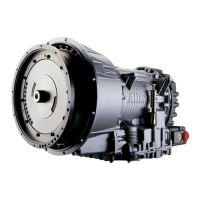
